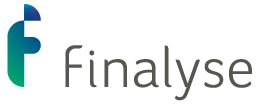Written by Sean Burke, Senior Consultant and reviewed by Francis Furey, Principal Consultant.
Introduction
In September 2021, the European Commission (EC) published a comprehensive review of the Solvency II directive, based on extensive work conducted by EIOPA. The proposed amendments were provided to the European Parliament for their consideration and approval.
The European Parliament's Committee on Economic and Monetary Affairs (Econ) has recently approved many of the amendments to the EU's Solvency II rules and the new directive on recovery and resolution of insurers. These changes are poised to reshape the regulatory landscape for insurers operating within the European Union.
After more than a year of deliberation, Econ members voted on various compromises and amendments, resulting in a majority approval of the Solvency II proposals. An implementation date for the amended directive of January 1st, 2026, has been proposed by Econ.
Key Amendments
Freeing Up Capital
Econ’s proposals have the objective of liberating billions of euros in regulatory capital for investment in the EU. This is to be achieved by reforms to the risk margin and the long-term guarantee package. While some concerns have been raised about the potential misuse of freed-up capital, the committee has proposed that insurers should prioritize directing such capital towards productive investments in the real economy.
Risk Margin
The cost-of-capital method is used to calculate the risk margin under the SII directive. Previously set at 6%, the EC proposed a value of 5% for the cost-of-capital. However, Econ has reduced it further to 4.5%.
The proposed “lambda” approach for the risk margin calculation has been endorsed by Econ. This accounts for the time-dependency of risks and should reduce the volatility of the risk margin.
Climate Change Scenario Analysis
The amendments emphasize the importance of addressing climate change and other environmental risks. Insurers are required to perform climate change scenario analysis at least every 3 years, with the results to be disclosed in the solvency and financial condition report (SFCR). The committee further urged the evaluation of insurers' exposure to biodiversity-related risks, underlining the growing significance of ESG (environmental, social, and governance) considerations.
Transition Plans
An important addition introduced by Econ is the requirement for insurers to develop plans for transitioning to net-zero greenhouse gas emissions by 2050. These plans must include quantifiable targets and processes to monitor and manage risks associated with the transition. The move aligns with the broader sustainability goals outlined in the Corporate Sustainability Reporting Directive and reflects the growing emphasis on sustainable practices within the financial sector.
SFCR
The amendments address governance and reporting requirements. The solvency and financial condition reports have been enhanced to include information on sustainability risks, climate scenario analysis results, and transition plans. These changes underscore the increasing importance of transparency and accountability in relation to environmental and social factors.
The SFCR should be split into two parts, one for the general public and another for the policyholders. The policyholder section should include a description of the business performance, capital management, and risk profile of the insurer.
Proportionality
Econ has largely adopted the Commission’s proposals for creating “low-risk undertakings,” although the criteria for identifying such firms have been adjusted slightly. These undertakings will be subject to fewer and simpler regulatory demands.
Gender Balance
Econ has passed a motion that will require insurers to set quantitative objectives to improve gender balance within their governance structures. These changes demonstrate a commitment to fairness and inclusivity within the industry.
Conclusion
While these amendments are seen as a step forward in aligning the insurance industry with broader EU sustainability goals, reactions from the various stakeholders vary. Industry lobby group Insurance Europe expressed both approval and disappointment, noting improvements in areas such as capital and volatility but also lamenting the dilution of some ambitious proposals. Environmental NGOs expressed concern that the amendments do not go far enough in incentivizing sustainable practices.
The approved amendments are now set to enter negotiations with the European Commission and Council. As these discussions resume in September after the summer break, the final shape of the regulatory framework for insurers in the EU will become clearer.
How can Finalyse help?
Finalyse has extensive experience in Actuarial and Risk management for insurance companies and can help you make sense of the Solvency II amendments, including:
• Gap Analysis: Perform a gap analysis detailing your situation against regulatory requirements and published proposals.
• Roadmap: Develop a roadmap for the integration of proposed changes into your business.
• Workshops: Conduct workshops with the objective of upskilling the relevant stakeholders within your business on the EC recommendations.
• Strategic Support: Understand the SII proposals for your business, including the long-term business strategy.


